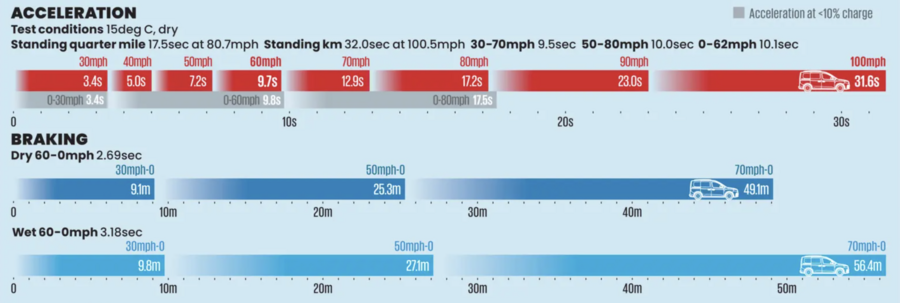It takes only a few yards in the Connect PHEV to appreciate what relevant qualities it will bring to the line-up. The car moves off under electric power almost all of the time and there’s a more than adequate sufficiency of it for part-throttle town motoring.
We tested the car against the clock running as a regular hybrid and in EV mode, and while it narrowly squeezed under the 10sec-to-60mph yardstick with both piston and electric motors working in tandem, it was barely two seconds slower without the help of the petrol element.
It isn’t the job of a vehicle like this to be fast, of course, but instead to hit an assured standard on outright performance with easy control and good drivability, so as to keep passengers and load alike well located and secure, and to have a little potency in reserve when heavy hauling is needed.
The VW-sourced petrol-electric powertrain manages all that. It feels fairly responsive, and nippy without being over-sensitive, at town speeds; has enough urge to cope with flowing country roads and not get overworked when climbing; and only begins to feel slightly outmatched during the kind of fast motorway driving that most smaller utility vehicles would be likely to struggle with.
Unlike with some hybrid systems, you can select gears yourself using the shift paddles, so you can usefully prep it for overtaking or climbing, but it could sometimes be quicker with downshifts.
The car’s default energy regeneration mode, meanwhile, is an ‘automatic’ one that ramps up regen on a trailing throttle in heavy traffic, for example, but it also changes the progression of the brake pedal having done so, which most testers disliked.
Turn the regen mode to ‘low’ and the car coasts more freely. The brake pedal travel becomes longer and feels quite soft initially, but you learn to modulate it and keep the car smooth in traffic well enough.
